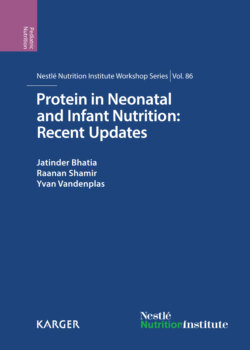Читать книгу Protein in Neonatal and Infant Nutrition: Recent Updates - Группа авторов - Страница 29
На сайте Литреса книга снята с продажи.
Prevention of Allergy
ОглавлениеThe prevention of allergic diseases is a public health priority in many developed countries due to high morbidity, impaired quality of life, and impressive social and medical costs related to allergy. Tolerance development and allergy risk are influenced by a complex array of factors, including genetics, epigenetic regulation of gene expression, birth and feeding mode, microbial environment, and exposure to environmental toxins or pollutants [24].
Allergy prevention can be directed at three potential stages: primary prevention, which inhibits immune sensitization; secondary prevention, which avoids disease expression subsequent to sensitization, and tertiary prevention, which suppresses symptoms after disease expression [25]. However, tertiary prevention can be considered as early treatment.
Prenatal prevention is complex and multifactorial, and dietetic intervention during pregnancy is not currently substantiated by scientific evidence [2]. Postnatally, dietetic prevention is based on the promotion of breastfeeding and HF with a documented preventive effect for the first months in formula-fed high-risk infants [2, 26].
For infants >4-6 months of age, there are insufficient data to support a protective effect of any dietary intervention regarding the development of atopic disease [2, 17]. A recent study showed that the early introduction of peanuts modulated immune-specific responses and significantly decreased the frequency of the development of peanut allergy among children at high risk for this allergy [4].
